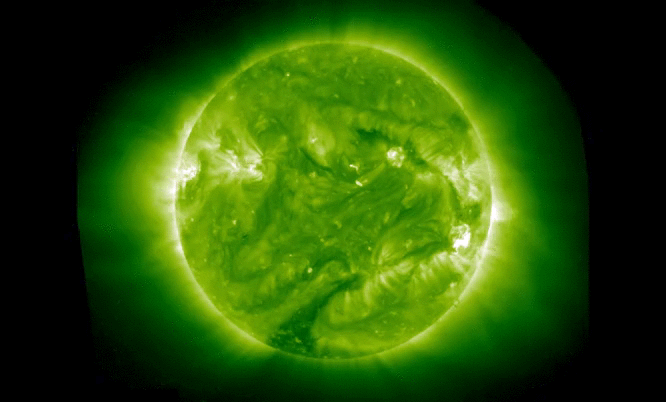Last week was -once again- a nice example of a relatively inactive Sun. It was quite a surprize when CACTus detected a partial halo coronal mass ejection (CME) in SOHO's coronagraphic imagery on 07 December. Indeed, starting at 15:12UT, a CME having a width of about 210 degrees could be seen emanating from the Sun's east limb travelling at a plane-of-the-sky speed of about 650 km/s.

Thanks to Stereo-A, which is now providing all day round imagery of the Sun's farside, the source of the eruption was quickly identified. Indeed, around 15:00UT, a solar flare and related coronal disturbance can be observed in extreme ultraviolet (EUV) images in a region in the southwestern solar quadrant. The strength of the flare was estimated to be a low-level M-class flare or possibly an upper-level C-class flare, so not a very strong event.


The position of the source region favored a good link with the STEREO-A spacecraft, so it was no surprize that the IMPACT-instrument onboard STEREO-A registered an important increase of solar energetic particles (protons,...) starting about an hour after the blast. Pending the energy-band observed, a 100- to 10.000 fold increase in the particle flux was observed. It took several days before the particle fluxes had decreased back to nominal levels. Data from PLASTIC, an instrument onboard STEREO-A providing solar wind data, did not show any particular jump in solar wind speed over the next few days, indicating that (the bulk of) this CME probably had missed STEREO-A.

When the active region finally rounded the east limb late on 09 December, it concerned only a small sunspot region (NOAA 2468) which produced a handful of low-level C-class flares for the remainder of the week. A short movie of the event as seen by STEREO-A (EUV and difference coronagraphic images) and SOHO (difference coronagraphic images) can be found here.

 |
 |





